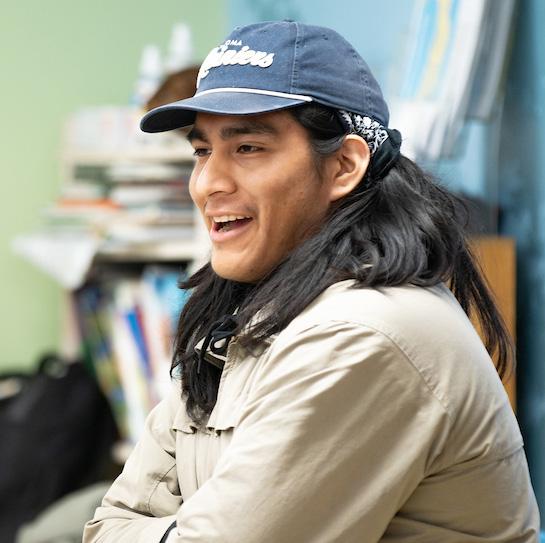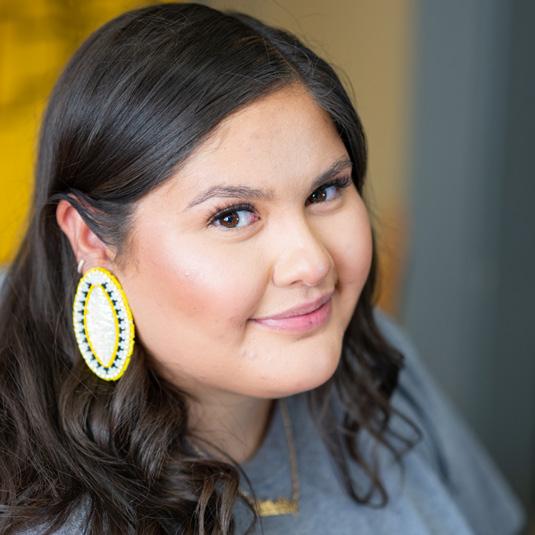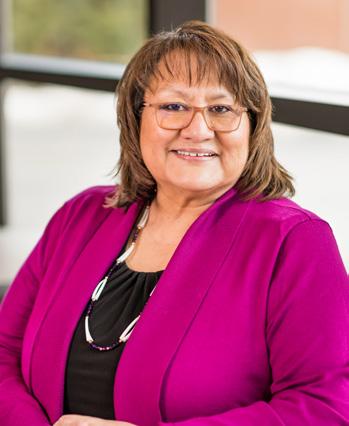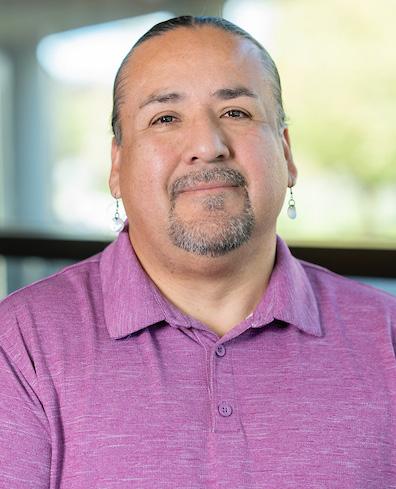





The Confederated Tribes of the Warm Springs that live along the Columbia River and its tributaries once relied on the seasonal influx of migrating fish as a food source to sustain themselves.
The rivers’ marine life infuses the tribe’s culture and history.
It may seem natural therefore that Keo, a member of the Warm Springs Tribe and a doctoral candidate in the university of Idaho’s fisheries department, centers his research on a migratory fish native to the Columbia system. But the fish in question, the focus of his research, isn’t often on the minds of people who consider the many trout and salmon that return to the river from the ocean to spawn.
“I’m the only one in my tribe who works with lamprey,” Keo said.
Pacific lamprey, known to most tribes simply as “eels,” are a boneless, indigenous fish of the Pacific Northwest that, like salmon, lives for many years in the ocean before migrating to freshwater streams to spawn and die. To climb freshwater rapids encountered on its journey inland, the fish uses its sucking-disc mouth to scale rocks.
As part of a contingent of tribes of the Columbia River Inter-Tribal Fish Commission, or CRTFC, Keo has been translocating returning Pacific lamprey from the Columbia River upstream to spawning areas to ensure enough mature lamprey bypass the river’s system of dams and reproduce.
To do this, biologists like Keo catch lamprey below the dams, and at traditional harvest sites like Sherars Falls of the Deschutes River, load them into tanker trucks and drive them to release sites upstream.
The idea is to allow the dwindling population of native lamprey to safely reproduce, thereby rebounding populations to eventually allow a viable fishing season.
“We’ll never have the numbers we once had,” Keo said. “The goal is to have a selfsustaining fishery.”
Pacific lamprey were once so numerous in the Columbia and its tributaries in Washington, Oregon and Idaho – in Idaho, returning fish migrated in the Snake River past Boise, turning south to follow the Bruneau River into Nevada to spawn – that they were harvested seasonally in great numbers by tribes including the Nez Perce, Umatilla and Yakama. But river dams built since the beginning of the 20th century limited the lamprey’s ability to reach spawning grounds, causing populations to drop significantly.
Keo’s research explores ways to improve fish ladders to accommodate Pacific lamprey, and he follows the fish to spawning areas to learn their survival and regeneration rates.
The history of the lamprey in tribal culture includes a creation story that Keo learned from video on Youtube:
Lamprey was a gambler, and he was down at the side of a stream beating beaver and muskrat at the stick game – a gambling game - and collecting his winnings when coyote, the creator, passed by. Coyote challenged lamprey to a game. He beat lamprey over and over until lamprey had no more possessions to gamble, but lamprey refused to quit. He bet his arms and legs and lost, but still refused to concede to coyote. Because of his lack of humility, coyote chastised lamprey.
“Your mouth got you in trouble,” coyote told lamprey. “Now you have to swim upstream sucking on rocks.”
Keo’s research will make sure the Pacific lamprey flourishes and continues to travel the Columbia River and its tributaries in sustainable numbers – and climb the same rapids and falls it has scaled for centuries by sucking on rocks.
At U of I, you’ll create a family away from home with other Native students, faculty, staff and alumni. You’ll discover new opportunities and surprising things about yourself, while staying firmly grounded in your tribal identity and cultural heritage.
On a campus and in a community with so much to offer, you’ll be surrounded by a network of support and tradition that will help you thrive.






NASC is the heart of Native student life, with tribal networking and social events, leadership and professional development programs, peer mentoring and cultural activities. You’ll connect with mentors, friends, staff and faculty who will help you adjust and make the most of your college experience.
INSTEP is an effective student retention and tribal leadership program, implemented by the Native American Student Center. Through INSTEP, you’ll go beyond your degree program by incorporating your cultural knowledge and skills into your U of I experience as you prepare for leadership in your tribal community.
Through the NASA student club, you’ll get involved in social activities and campuswide events focused on preserving cultural heritage and identity among Native American students.
Are you majoring in science, technology, engineering or math? AISES will help you explore your career path and connect with other students and professionals nationwide. Plus, you’ll have special access to scholarships, internships, national conferences and networking opportunities.
ANAMP is focused on increasing the number of Native American students successfully completing degrees in STEM fields. ANAMP provides stipends, travel assistance and research opportunities for undergraduate students. This program is in partnership with Salish Kootenai College as a part of the Louis Stokes STEM Pathway and Research Alliance.
Celebrate tradition with education programs, music, art and other cultural activities throughout the month of November.
Join our Native American students in a celebration of culture. The annual, studentfacilitated Tutxinmepu Powwow has been going for the last 20 years and gathers dancers, drummers and visitors the first weekend of April.
Participate in weekly drum practice or attend a performance by this all Native American student drum group.
Students facilitate a youth college-prep event and cultural exhibition for spectators during the halftime of select U of I Vandal athletic events.
All Scholarships below require: full-time enrollment, attending U of I Moscow campus, meeting GPA requirement, and participation in the Indigenous Nations Scholar Training for Excellence Program (INSTEP) via the Native American Student Center.
If you live outside of Idaho, you may qualify to save big on tuition through the Tribal Excellence Scholarship Program. This program waives outof-state tuition for full-time undergraduate students who are enrolled members of the 11 U of I MOU Tribes (see back for full list). The renewable award is also available to students transferring to U of I from an accredited tribal college or university.
To exemplify our commitment and acknowledgment of those lands we reside on, U of I is offering a scholarship to cover the cost of tuition for enrolled members from the five state of Idaho MOU Tribes.
Indicate your enrolled tribe on your U of I application
Submit your tribal enrollment card to the Native American Student Center
Automatic Eligibility for Admission
Cumulative unweighted high school GPA of 3.0 or higher, test scores not required
Cumulative unweighted high school GPA of 2.60 to 2.99 AND 15+ ACT or 740+ SAT
3+ on both ISAT Math and Literacy (Idaho residents only)
Other Admission Opportunities
Automatic eligibility for admission to Vandal Gateway Program
• Cumulative unweighted high school GPA of 2.30 to 2.59 regardless of test scores
IDAHO RESIDENTS
Full-time Student Fees/Tuition
$9,084
& Meals
$11,243 Books and Supplies (Estimated) $1,180
$21,507
• Cumulative unweighted high school GPA of 2.60 – 2.99 with no test scores or scores below 15 ACT or 740 SAT
• Cumulative unweighted high school GPA below 2.30 regardless of test scores
WUE AND INVITATION TO IDAHO**
Full-time Student Fees/Tuition $28,320 Housing & Meals $11,243 Books and Supplies (Estimated) $1,180
• The Coeur d'Alene Tribe
• The Confederated Tribes of the Colville Reservation
• The Confederated Tribes of the Umatilla Indian Reservation
• The Kalispel Tribe of Indians
• The Kootenai Tribe of Idaho
• Nez Perce Tribe
• Shoshone-Bannock Tribes
• Shoshone-Paiute Tribes of the Duck Valley Indian Reservation
• Spokane Tribe of Indians
• Confederated Tribes and Bands of the Yakama Nation
• The Confederated Tribes of the Warm Springs Reservation in Oregon



